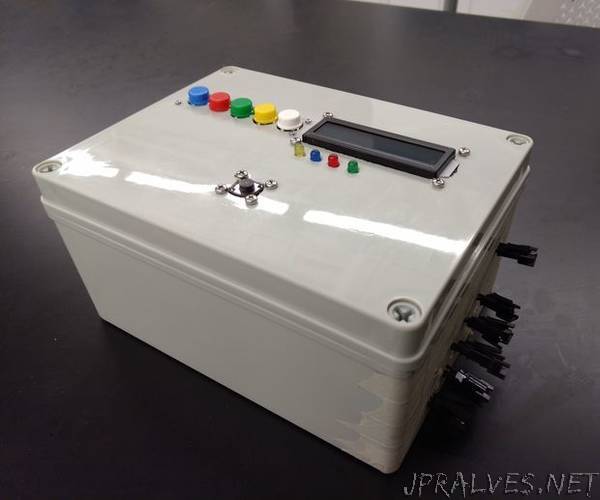
“In the summer of 2018 I had the opportunity to work with a senior at my college to finalize and finish up his senior engineering project. This project was an automated drip irrigation system at our campus garden. The system consists of a 550 gallon tank that is filled via rain water, a pump to circulate the tank’s water, two solenoid valves, drip emitters, and various sensors such as 2 soil moisture sensors, a temperature sensor, a water sensor.
Although we are using this Arduino Controller for this irrigation system this design can be adapted for many other projects. Our Arduino is receiving information from our water level sensor, a temperature sensor, and the two soil moisture sensors to decide whether or not the tank valve should be opened for watering but adapting this design to work with more and/or different sensors should not be too difficult.
Our system works like this. The pump circulator, temperature sensor, and water level sensor are all mounted onto a wire cage frame. This frame is placed inside of the tank. The water level sensor is positioned about 6 inches above the bottom of the tank and when the water level drops below this sensor the controller turns on an LED signalling that the tank is low on water. The temperature sensor checks to make sure the temperature of the water is within the range defined by the user so that it doesn’t damage the plants. Then the pump circulator moves the water around if it is too cold. After this set of checks our two soil moisture sensors send values to the Arduino about the soil’s volumetric water content (VWC). These two values are averaged and if they lie below the (user defined) VWC lower limit the tank valve is opened and drip irrigation begins until the soil’s VWC is satisfactory. These process runs every hour on the hour by using a real time clock.
The purpose of this project was to extend the growing season for our environmental center (EC). The EC provides local and real foods for campus dining via the Real Foods Challenge and it provides learning opportunities for students. However, campus irrigation only overlaps with the school year for around two months. By extending the growing season these educational opportunities can be more available while also increasing food production to provide an extra 600 lbs of produce.”
